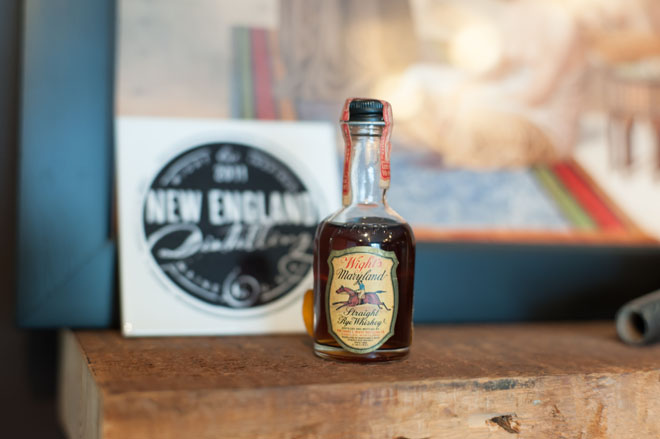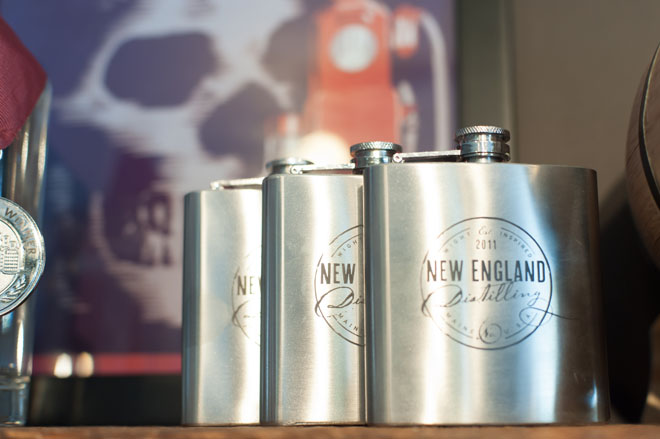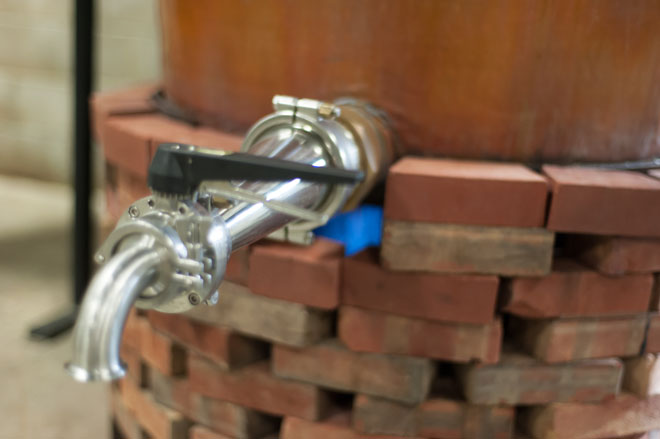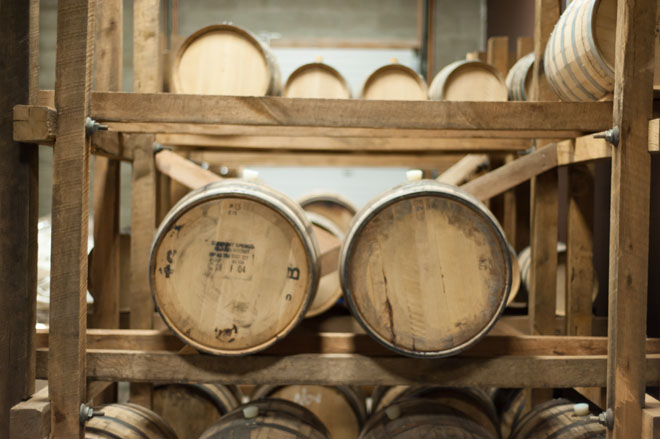New England Distilling, Portland
In 1851 Maine became the first state to ban the sale and manufacture of alcoholic beverages. Under Portland’s Mayor Neal Dow—the “Father of Prohibition”—the Maine law was passed through Legislation, and many states followed suit.
Fast forward 162 years. Portland, for a city of its size, boasts one of the largest concentrations of breweries and distilleries in America. Helping to bridge the gap between the past and the present is Ned Wight, owner of New England Distillery. With a family pedigree of his own—his ancestors were making rye whiskey in Maryland from the 1860s through 1950s—he’s now continuing the family tradition.
“I grew up hearing about the family business,” Wight says. “That led to home brewing and that led to professional brewing.” He moved to Maine in the 1990s and became the first employee at Allagash, working with Rob Tod in 1996. While at Allagash he learned about production and took brewing classes, but his love for distillation remained. In 2002 he left Allagash to pursue his dream of opening his own distillery.
Wight makes gin and rum (and is in the process of aging rye whiskey) with Tim Fisher, his sole employee and long-time friend. During a recent visit to the distillery Fischer shows me a photograph of their families on vacation together. “Tim’s dad and my dad were best friends from high school,” Wight says. “We’ve known each other forever.”
When I enter the distillery, I immediately see old black and white photographs of Wight’s family distillery and the men who worked there. The men have big mustaches, and stare seriously at the camera. In addition to New England Distilling’s T-shirts, flasks, and glasses, there are old shot glasses, whiskey bottles, and glass jugs from the prohibition era.
Wight and Fisher make Ingenium Gin, 8 Bells Rum, and a yet-to-be-named rye whiskey in a 3,000-square-foot warehouse. It isn’t fancy or elaborate. There are barrels of rum and whiskey, three large fermenters and other distilling equipment, and many bags of grain.
The day I visit, music is playing and the two men are drinking coffee. The smell is thick, reminiscent of bread and beer with an underlying sweetness. The space feels like someone’s basement or garage, and the vibe is relaxed, even though there’s a lot going on. I’m drawn to the 250 gallon Portuguese handmade copper pot still in the corner. Flames heat the bottom of the still and a brick fence keeps the heat focused. At this point Wight begins to explain the distillation process and I vow to truly appreciate each gin martini I order from now on. What Wight and Fisher do is an art, and I encourage a visit to the distillery to learn how these spirits are made.
Central to Wight’s ethic is the intimate contact between the flame and the still. “When it comes down to distillation, inefficiency in the still equals flavor in the backend. By going with this system we hold on to a lot of flavor,” he says. “Even though it’s cleaner and easier to go with steam, I feel that this is a significant component of what we are doing.”
But it’s not just a science.
As a commercial photographer for nearly 15 years, Fisher appreciates the connection between art and distilling.
“I love being a part of a new business and helping it grow,” he says. “Distilling and brewing is really interesting work. I also like the element of creativity—¬distilling is very much a marriage of art and science.”
Wight talks a lot about variation in barrel aging, how even with American oak barrels, differences in location, soil, and weather can affect flavor during the maturation process. It’s this variation that makes the rum and whiskey unique, he says.
“We have regimented fermentation, regimented distillation, and then we hand it over to Ma Nature,” he says. “Nothing bad is going to come out of it, it’s more about what intensity of good or what specific character will come out of that barrel. Some are really big with flavors of vanilla or toffee, and others are more subtle.”
Last August, Wight and his family visited the Maryland distillery and discovered 100-year-old racks in the rick house. They brought these racks back to Maine and now Wight’s rye whiskey is aging on racks that once held his grandfather’s rye whiskey.
This “distillation” of old friends, history, and a mutual appreciation for art and science makes New England Distillery uniquely Maine. Their rum is named after a Winslow Homer painting and the name of their gin means discovery. “You play and play and play and it’s the moment you get it, that light bulb moment,” Wight says of the meaning of the word ingenium. “And that exactly relates to the gin. After I sat back and thought about it and tasted the gin, I was like, ‘I love it. This is perfect.'”
“I love smelling it in the glass,” he says. “One of my favorite things about drinking spirits is the empty glass. I keep coming back to the glass and sniff it and see what’s happening in there. It changes a lot, it keeps on going—even after the liquid is out, it keeps on going.”
Wight and Fisher are at the distillery most days and available for tours Monday through Friday between noon and 5 p.m., or by appointment.
26 Evergreen Dr. | Portland | 207.878.9759 | newenglanddistilling.com






































